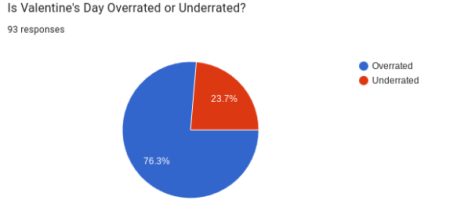Enforcement of Dress Code Policy Justified
Sophomore Jessica Nensel shows off her outfit that fits the dress code regulations.
January 17, 2017
In high school, dress codes are needed because they provide guidance as to what is considered appropriate clothing in a school environment. Dress codes start preparing students for future business settings, which often have dress codes, too.
Therefore, the need for a dress code at MHS is no different. One positive aspect to the MHS dress code is that students here have been given the privilege of having more lenient guidelines than some of the other high schools. It simply asks that students dress appropriately for a school environment, and many students do.
“[As] a whole, I feel that the students follow the dress code,” said Samantha Smigielski, dean of students.
Yet, there are some students who don’t, and when the dress code is violated, it needs to be strictly enforced.
With the MHS dress code, there are many pieces of clothing students can’t wear that teachers and security guards strongly enforce. These include foul language on graphic t- shirts, hats worn in the building and hoods pulled up over one’s head. The school staff also watches carefully for gang symbols and any pieces of clothing that create extreme distractions in a learning environment.
But when it comes to clothing items like crop tops or other fashions that might be a little more scandalous, students seem to find loopholes in what they wear and also seem less called out about it by the school staff.
Students have witnessed situations in which a student is told to change because of a dress code violation, the violator declares he or she will but then never does it.
Also, the school administration trusts that the staff will notify the deans if they think a student is in violation of the dress code.
“We rely on our staff to notice dress code violations throughout the day,” said Smigielski. “Students are often brought in to change their shirts so that they can’t just cover up and then go back into [class with] their previous clothes.”
Sweatshirts, though, have become a popular way for students to cover themselves up until they are out of the security guards’ way. Then, they disrobe their sweatshirts and wear the outfit that is not school appropriate.
This isn’t just the security guards’ faults. It must be hard to justify what is and is not appropriate sometimes when a dress code is lenient. That doesn’t mean the dress code itself needs to be stricter, but students who attempt to hide from staff with inappropriate clothing should be caught and given stricter consequences.
And it’s not as if students are never caught for dress code violation. Students are brought into the deans and are asked to change, but it’s a problem when students find ways around the system.
This issue, then, causes many students to think that the dress code is not consistently enforced. Some students appear to get called out for wearing something revealing while another student isn’t.
“There are some people who are getting dress coded for no reason, but then there are others who are literally wearing a cut shirt that’s showing their whole stomach, and then there are girls who get dress coded for showing the smallest amount of skin,” said Sophomore Anissa Maravilla.
Students and staff assume that teachers will enforce the rules when a student walks into class wearing something inappropriate, but that can leave teachers in an uncomfortable situation.
For example, many male and female teachers might find it uncomfortable to point out to a girl student that she is wearing something too short or too revealing.
It doesn’t have to be left up to just the teachers; students can take steps to enforce the dress code, too.
Smigielski said, “They can tell their teacher or come into the Dean’s Office.”
While students could call each other out, this also can become uncomfortable for students because it’s not always polite to call out a student in front of his or her peers.
But staff and students alike should enforce the dress code because it shows how well all the other rules at MHS are enforced. It also shows students that they need to follow an appropriate dress code or they will be asked to change, not that they might be asked to change.
The dress codes are normally not a problem, but there are students who have gone over the line with the least amount of clothing being worn and not getting in trouble. This might give other students ideas about dressing in something they should save for summer when we aren’t in session.
The worry shouldn’t only be on how the inappropriate clothing is making people feel in the learning environment but also the effects and influences it could have on other students who might get the idea that questioning the authority and the enforcement of these rules is okay.
Another underlying issue about dress codes in general is the pressure on females compared to boys.
“I think the dress code is favorable to males because they aren’t called out for their clothing as much as girls are. I think that to interrupt a girl’s education because it’s distracting to males is a way of showing girls that their education is less important, “said Sophomore Lauren Loding.
This perspective is common among female students because many girls think the dress code places more restrictions on female fashion trends.
It could be argued that in pop culture fashion for women publicizes their bodies more than male fashion does for the male body.
Some female students, then, claim that the high school dress code singles them out. This can be true, but in popular fashion, many clothing pieces are more inappropriate for a school setting than they would be for a boy.
A good aspect to the dress code enforcement is that it is reviewed by the staff/handbook committee each year, and changes can be made if needed. This means that if students feel like it should be stricter or even looser, they can petition for a change and should make suggestions for what clothing is and is not acceptable through the Dean’s Office.
Luckily for MHS students, we don’t have the rules of no bare shoulders, that straps must be the width of two fingers or that shorts should pass the length of the fingertips.
The MHS dress code serves a purpose to keep students appropriate for a school setting. It’s fair and should be fairly and frequently upheld.
One suggestion for helping with the enforcement of the dress code would be for the school to have a specific email account to which students and teachers could write when they see a student in dress code violation. Then the Dean’s Office could call the student down, the student in violation isn’t called out in front of the whole class, and it leaves the teachers and the other students only accountable for emailing—a much more comfortable task than confronting the student directly.

